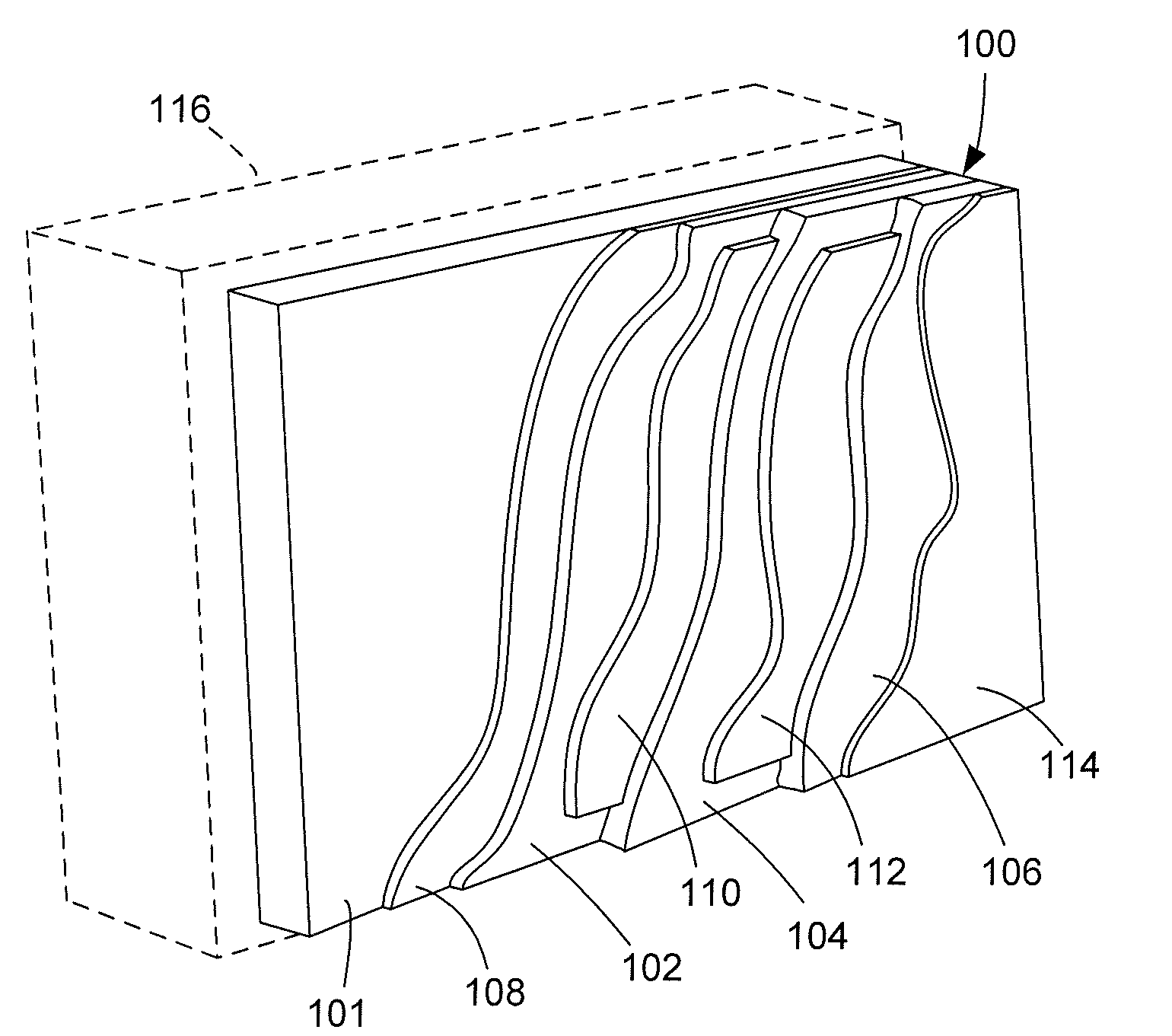Conductive coating for reduced reflectivity on electronic displays
a technology of electronic displays and coatings, applied in the field of electronic displays, can solve the problems of reducing the reflectivity of conventional anti-reflective coatings, hampering the viewability of display screens, and reducing the reflectivity of conventional coatings, so as to achieve the effect of controlling the electrical conductivity of the structure and reducing the reflectivity
- Summary
- Abstract
- Description
- Claims
- Application Information
AI Technical Summary
Benefits of technology
Problems solved by technology
Method used
Image
Examples
Embodiment Construction
[0013]As illustrated in FIGS. 1-2 (not to scale), in an exemplary embodiment of the present invention a display screen structure 100 comprises a substrate 101 and alternating optical thin-film conductive layers 102, 104 and 106, and optical thin-film dielectric layers 108, 110, 112 and 114. Although in the exemplary embodiment three conductive layers and four dielectric layers are shown for purposes of illustration, in other embodiments there can be more layers or fewer layers of each type, i.e., any suitable number of conductive layers and any suitable number of dielectric layers.
[0014]Display screen structure 100 can be part of an electronic display 116, such as the EMI / RFI-shielded type commonly used with aircraft cockpit instruments. As such, it is desirable for display screen structure 100 to not only provide EMI / RFI shielding but also reflect minimal ambient light so that a viewer can readily see the display during daytime. It may also be desirable for display screen structure...
PUM
| Property | Measurement | Unit |
|---|---|---|
| sheet resistance | aaaaa | aaaaa |
| sheet resistance | aaaaa | aaaaa |
| optical structure | aaaaa | aaaaa |
Abstract
Description
Claims
Application Information
 Login to View More
Login to View More - R&D
- Intellectual Property
- Life Sciences
- Materials
- Tech Scout
- Unparalleled Data Quality
- Higher Quality Content
- 60% Fewer Hallucinations
Browse by: Latest US Patents, China's latest patents, Technical Efficacy Thesaurus, Application Domain, Technology Topic, Popular Technical Reports.
© 2025 PatSnap. All rights reserved.Legal|Privacy policy|Modern Slavery Act Transparency Statement|Sitemap|About US| Contact US: help@patsnap.com



